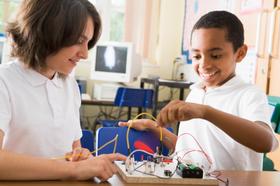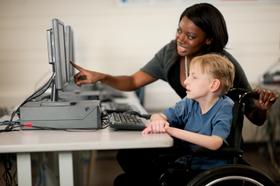Top Rankings
Deer River Public School District ranks among the top 20% of public school district in Minnesota for:
Category
Attribute
Diversity
Most diverse schools (Top 1%)
For the 2025 school year, there are 3 public elementary schools serving 840 students in Deer River Public School District. This district's average elementary testing ranking is 4/10, which is in the bottom 50% of public elementary schools in Minnesota.
Public Elementary Schools in Deer River Public School District have an average math proficiency score of 37% (versus the Minnesota public elementary school average of 47%), and reading proficiency score of 45% (versus the 51% statewide average).
Minority enrollment is 49% of the student body (majority American Indian), which is more than the Minnesota public elementary school average of 40% (majority Black and Hispanic).
Overview
This School District
This State (MN)
# Schools
4 Schools
1,655 Schools
# Students
852 Students
571,925 Students
# Teachers
73 Teachers
40,363 Teachers
Student : Teacher Ratio
12:1
12:1
Student By Grade
District Rank
Deer River Public School District, which is ranked within the bottom 50% of all 520 school districts in Minnesota (based off of combined math and reading proficiency testing data) for the 2022-2023 school year.
The school district's graduation rate of 85% has increased from 80-89% over five school years.
Overall District Rank
#294 out of 525 school districts
(Bottom 50%)
(Bottom 50%)
Math Test Scores (% Proficient)
37%
46%
Reading/Language Arts Test Scores (% Proficient)
45%
51%
Science Test Scores (% Proficient)
45%
41%
Graduation Rate
85%
84%
Students by Ethnicity:
Diversity Score
0.63
0.61
% American Indian
31%
2%
% Asian
1%
7%
% Hispanic
1%
12%
% Black
n/a
12%
% White
51%
60%
% Hawaiian
n/a
n/a
% Two or more races
16%
7%
All Ethnic Groups
District Revenue and Spending
The revenue/student of $24,697 is higher than the state median of $17,854. The school district revenue/student has grown by 7% over four school years.
The school district's spending/student of $21,568 is higher than the state median of $18,580. The school district spending/student has grown by 7% over four school years.
Total Revenue
$21 MM
$15,547 MM
Spending
$18 MM
$16,179 MM
Revenue / Student
$24,697
$17,854
Spending / Student
$21,568
$18,580
Best Deer River Public School District Public Elementary Schools (2025)
School
(Math and Reading Proficiency)
(Math and Reading Proficiency)
Location
Grades
Students
Rank: #11.
King Elementary School
(Math: 50-54% | Reading: 50-54%)
Rank:
Rank:
8/
Top 30%10
500 5th St Se
Deer River, MN 56636
(218) 246-8860
Deer River, MN 56636
(218) 246-8860
Grades: PK-5
| 396 students
Rank: #22.
Deer River Schools Sped
Special Education School
(Math: <50% | Reading: <50% )
Rank:
Rank:
5/
Bottom 50%10
313 Main Ave E
Deer River, MN 56636
(218) 246-8860
Deer River, MN 56636
(218) 246-8860
Grades: K-5
| 6 students
Rank: #33.
Deer River Secondary
(Math: 25% | Reading: 40%)
Rank:
Rank:
3/
Bottom 50%10
101 1st Ave Ne
Deer River, MN 56636
(218) 246-8241
Deer River, MN 56636
(218) 246-8241
Grades: 6-12
| 438 students
Recent Articles

The 15 Biggest Failures of the American Public Education System
The world is in a constant state of change and those who fail to adjust fall behind. Unfortunately, the American public education system has not kept up with the times and is currently facing a number of serious problems. Keep reading to learn about the biggest failures affecting the modern U.S. public education system as well as some of the trends that could spark change.

Florida Governor Calls for More Funding for State鈥檚 Public School System
Florida Governor Rick Scott has introduced a state budget for next year that pumps one billion more dollars into the public school system. We鈥檒l look at his reasons for the increase and the responses to the proposal.

Can Your Child鈥檚 School Meet the National Standards?
The article discusses the challenges public schools face in meeting national educational standards. It examines current performance trends, identifies key issues affecting student achievement, and explores potential solutions for improving academic outcomes across U.S. public schools.




